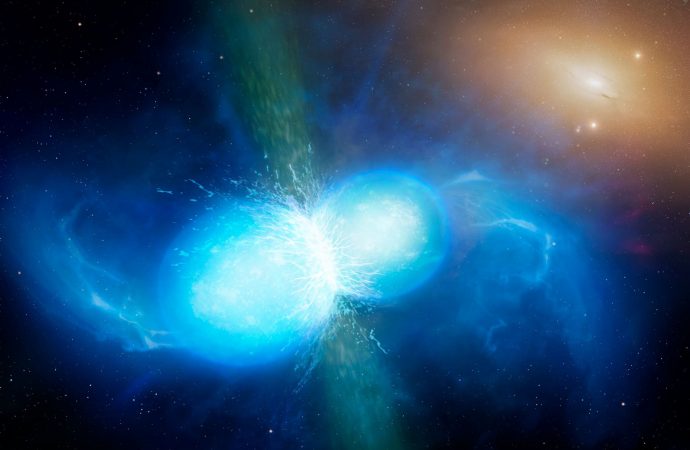According to new research, a nearby binary neutron-star merger gave birth to 0.3% of the Earth’s heaviest elements, including gold, platinum and uranium; such an event may have occurred about 1,000 light-years away from the Pre-solar Nebula, approximately 80 million years before the formation of our Solar System.
Source: Sci News
“This means that in each of us we would find an eyelash worth of these elements, mostly in the form of iodine, which is essential to life,” said Dr. Imre Bartos, an astrophysicist in the Department of Physics at the University of Florida.
“A wedding ring, which expresses a deep human connection, is also a connection to our cosmic past predating humanity and the formation of Earth itself, with about 10 milligrams of it likely having formed 4.6 billion years ago.”
To arrive at their conclusion, Dr. Bartos and his colleague, Columbia University astrophysicist Szabolcs Marka, compared the composition of meteorites to numerical simulations of our Milky Way Galaxy.
“Meteorites forged in the early Solar System carry the traces of radioactive isotopes,” Dr. Bartos said.
“As these isotopes decay they act as clocks that can be used to reconstruct the time they were created,” Dr. Marka said.
The scientists found that a single neutron-star collision could have occurred about 80 million years before the formation of the Solar System, in our own neighborhood, about 1,000 light-years from the Pre-solar Nebula.
“If a comparable event happened today at a similar distance from the Solar System, the ensuing radiation could outshine the entire night sky,” Dr. Marka said.
“Our study provides insight into a uniquely consequential event in our history,” the study authors said.
“It sheds bright light on the processes involved in the origin and composition of our Solar System, and will initiate a new type of quest within disciplines, such as chemistry, biology and geology, to solve the cosmic puzzle,” Dr. Bartos said.
“Our results address a fundamental quest of humanity: where did we come from and where are we going? It is very difficult to describe the tremendous emotions we felt when realized what we had found and what it means for the future as we search for an explanation of our place in the Universe,” Dr. Marka said.
The findings appear in the journal Nature.

































Leave a Comment
You must be logged in to post a comment.